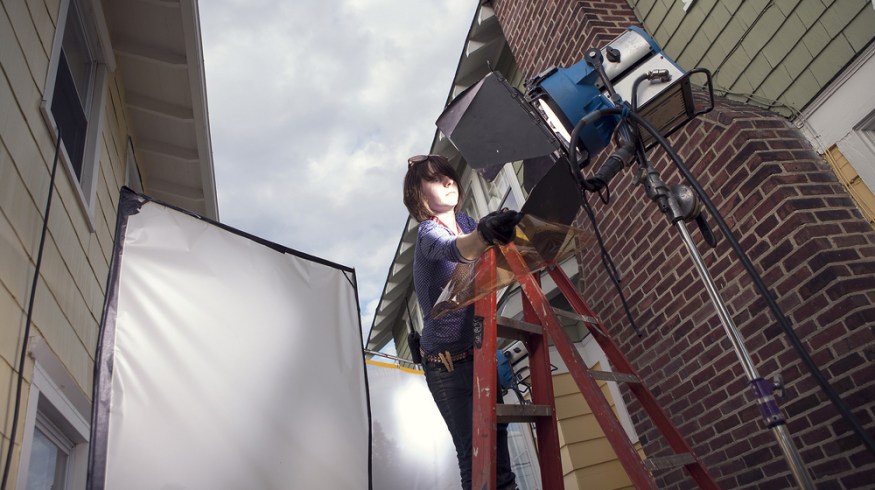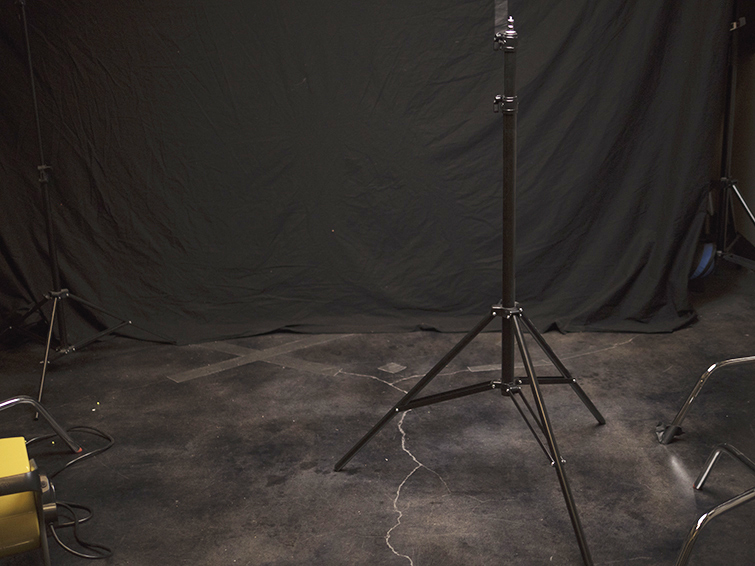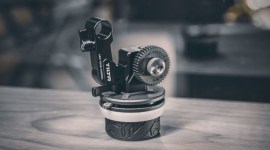
A Practical Guide to Working with Light Stands on Set
Light stands are priceless assets on any set. With the right stand for the job, you can create a safe and effective working environment.
Cover image via Shutterstock.
Different projects call for different light stands. The team at Grip Tips has created a series all about the standard light stands you’ll see on most any independent film set. Let’s take a look at how to effectively use each type.
Standard Light Stands
Most of us are familiar with these standard aluminum light stands that come with most kits. While they usually get the job done, they can easily break or deteriorate over time. It’s always a great idea to upgrade standard stands for something more robust. A poorly built light stand that you can’t raise to its full height can slow down the workflow on set. By investing in high-quality equipment, you can avoid this headache in the future.
Preemie Stands
A preemie baby stand is a sturdy replacement for your standard light stand. These stands weigh around 5lbs and can typically rise up to six feet and support up to 25lbs. In situations wherein your standard light stands may fail, the preemie stand will excel. If you take good care of them, these stands can last most of your career.
Low Boy Stands
Your low boy stands are the perfect solution when you need to mount a light a little bit lower — they’re also commonly used with a slider, like a Dana Dolly or a rhino slider. These stands can hold over 70lbs. and are more rigid than a preemie stand.
Beefy Baby Stands
Beefy baby stands are your next step up in the world of light stands. Although heavy and harder to transport, these stands feature a much higher build quality than a preemie stand or a standard light stand. As replacements for your standard light stand, these offer far more features. Beefy baby stands feature a steel/aluminum construction, and they typically support up to 22lbs, raise up to 12 feet, and feature a ⅝” baby pin (hence the term “baby stand”). These beefy baby stands will accommodate most lights up to a 2K fresnel and smaller HMIs like a Joker 800. Most importantly, they will endure the toughest working conditions.
Combo Stands
Combo, or junior stands, are the robust bigger brothers of the baby stands. These stands feature a much higher weight capacity — up to 70lbs. Combo/junior stands accommodate larger light fixtures, like a M18 or an ARRI Skypanel. They also are capable of many other duties beyond holding lights. Unlike baby stands, these stands feature a junior pin receiver to help support the added weight from the larger lights.
C-Stands
C-Stands actually warrant their own blog post. They are the most versatile of any stand on set. They can hold a light, support a bounce board, or organize clothing in wardrobe. If you don’t already own a C-stand, I would thoroughly recommend picking one up and getting used to its functionality, as you will see this stand on all professional sets.
Understanding the correct stands to use on a film set can save time and create safer working conditions for everyone. Knowing the difference between all the different stands will also help you to select the right tool on set.







